Boring Discussion
Do you struggle to get students engaged in their reading discussion? Back when I went to school, class discussion was often boring. We were expected to read our books at home and answer comprehension questions on handouts or in whole-class discussion. During those classes, we rarely left our seats, worked in groups, or looked closely at a text. That’s why I try to use creative activities to liven up reading discussion in my classroom and make it more meaningful. Depending on my
students, my objectives, and my text, I have a toolkit of discussion strategies
to use in class.
Furthermore, my students read during Silent Sustained Reading
(SSR) at least twice a week. Even though some of our administrators have encouraged students not to read in class (they think it’s a
waste of time), I base my professional
decisions on my learning from experts such as Donalyn Miller and Kelly Gallagher. I’ve also benefited from multiple professional
learning communities, including participating in twitter chat discussions with
#2ndaryela and #aplitchat.
With these experiences in mind, I’m sharing some of my
favorite reading discussion activities:
Anticipation Activities
In my experience, hooking students before they read is a key
strategy. Two ways to do this include
using traditional anticipation guides and inquiry with text evidence. In a
recent anticipation guide for Mark Twain’s, “The War Prayer,” students reported
their level of agreement for the following statements:
A. It’s unpatriotic
if you do not support your country’s war efforts.
B. Humor can be used
to hurt others.
Not only do students share their opinions of these ideas,
but they provide specific reasons to justify their thoughts. The resulting discussions give students
background for important topics and themes that arise in the text.
In the inquiry activity, students act like detectives and
look closely at text. In these text evidence anticipation activities, I prepare strips of sentences from an
upcoming reading, cut them out, and laminate them (for future use).
Then I give each student at least one line of
text. They write their lines on the
handout and get out of their seats to gather lines from one another. Once they’ve read and written a number of
sentences, they analyze the text, draw conclusions, and make predictions about
their upcoming reading.
Numbered Heads
This is an easy discussion activity that involves
cooperative learning. Additionally, once
students are familiar with the format, it can be used repeatedly. Essentially, students review a text selection
and answer several questions that are scaffolded, leading to multiple
answers.
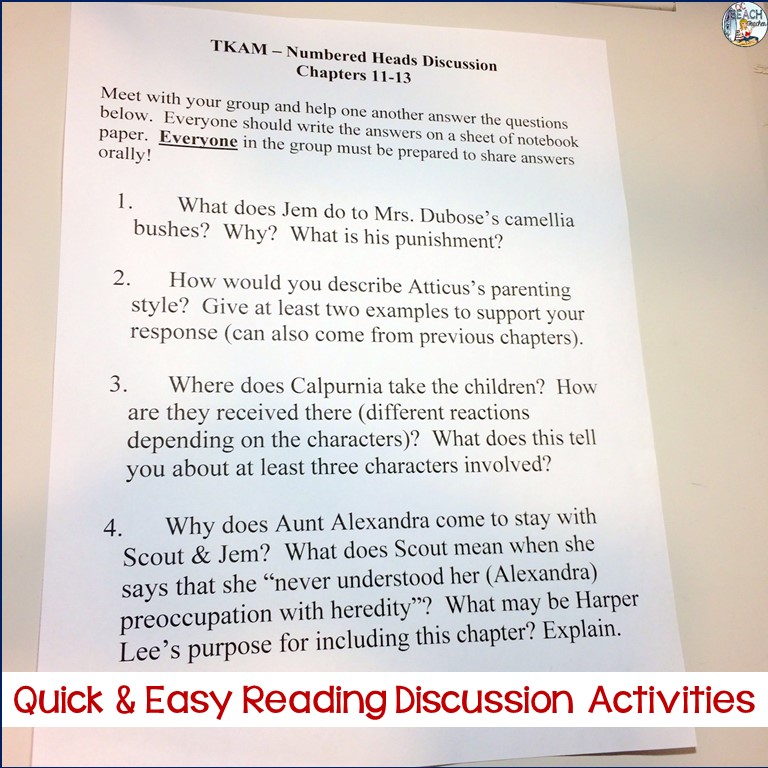 To begin, students are arranged into heterogeneous groups of
To begin, students are arranged into heterogeneous groups of
3 – 5, and they work together to answer the questions.
Even though they work together, they’re all
held accountable during “numbered heads.”
Students are randomly assigned numbers and when their numbers are
called, they stand and share answers.
The trick, though, is to make it unpredictable by ensuring their numbers
do not correlate with question numbers.
For instance, I may ask my numbers “ones” to stand and answer question
number “four.” Each student who is
standing shares a part of the answer so that all standing students are able to
participate.
Close Reading Scenarios
I’ve expanded upon this idea from a student teacher with my
own twist. The discussion handout revolves around an event from a novel and
requires students to work together to investigate the text. Recently, I completed this with Myrtle’s death in chapter 7 of The Great Gatsby. After
forming groups, each student selected a role such as the medical examiner,
police investigator, witness, etc., to determine what actually happened in the
accident.
After completing the close reading, students read informational
text about the laws, crimes, and punishments for driving while intoxicated in
our state. Next, they reviewed the “evidence”
they gathered and determined which characters should be charged with crimes. Finally, they provided a rationale for the criminal
charges they would file.
I’ve also created another close reading scenario for To Kill a Mockingbird where students gather evidence from Tom Robinson’s trial and become jurors who must determine a verdict.
Boxing
I tease students at the beginning of these discussions and
tell them we will be “boxing” in class.
It’s corny but always gets a laugh.
Then I pass out sheets of printer paper, and students fold their papers
into four “boxes”. In each box, they
complete a reading task for the pages we are reviewing. These tasks often include drawing illustrations
of important ideas and events, determining the meanings of words, identifying
literary techniques and author’s purpose, and responding personally to the
text. After they work individually, they
share in partners, small groups, or whole-class discussion. This is a simple strategy which involves minimal preparation and can also be used repeatedly!
Written
Conversation
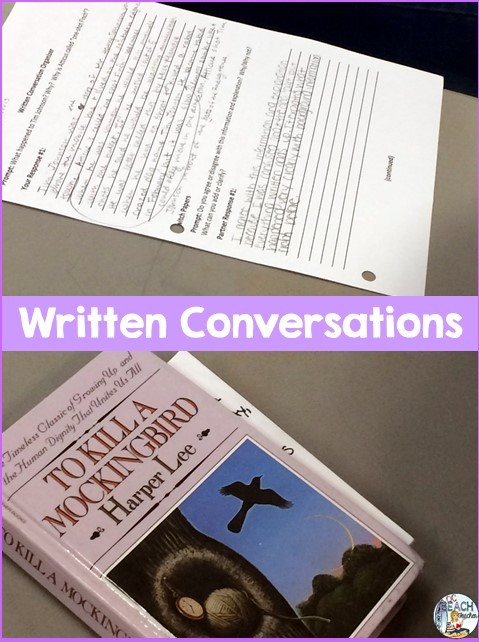 Here is another great idea that I received from a student
Here is another great idea that I received from a student
teacher. In this activity, students have
a conversation through their writing. I
give them a prompt related to the reading and after responding, they pass their
papers to partners, who respond to the original writers. In the response, the partner may evaluate,
elaborate, or modify what the original writer shared. This conversation continues back and forth
with additional questions. At the end of
the silent (but written) conversation, we can discuss ideas together as a
class.
Digital Task Cards
I’m using task cards to have students review their reading in Google
Drive. My school is slowly moving to a
1:1 environment. Our ninth and tenth
grade students have been given laptops, but my 11th and
graders still use a laptop lab in class when I sign up to use them. As I prepare for my students to be 1:1 next
school year, I’ve developed activities for them to try in class. With these
digital task cards, I use Common Core Reading Anchor Standards to create
prompts, and let students select from several questions for their
responses.
I hope my activities can be used in your classes, too. What ideas do you have for reading
discussions? Please share in the comments
below.

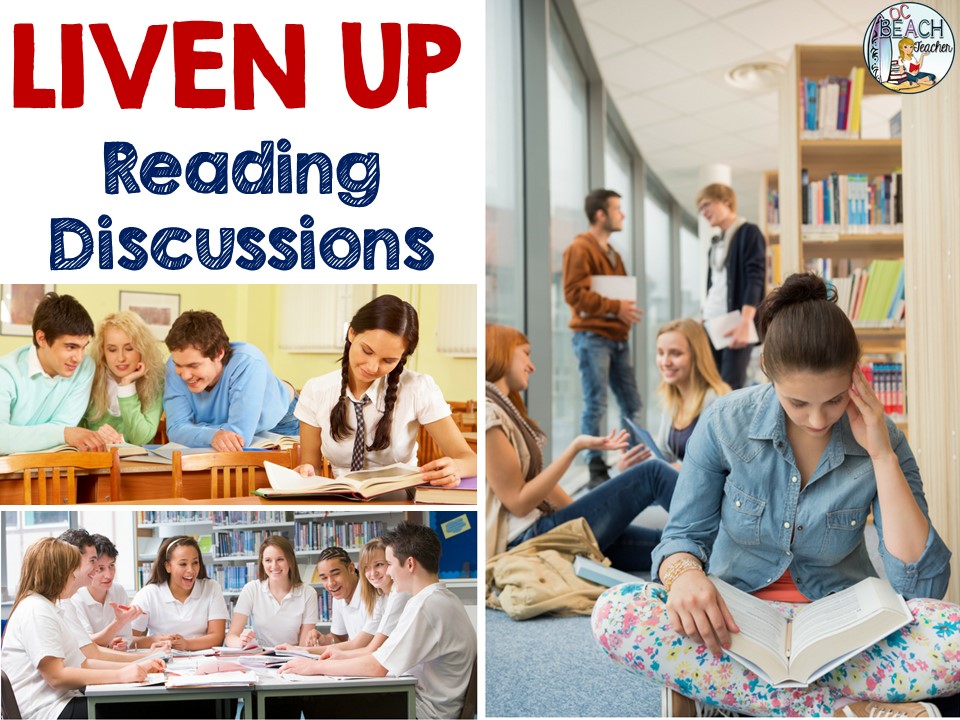
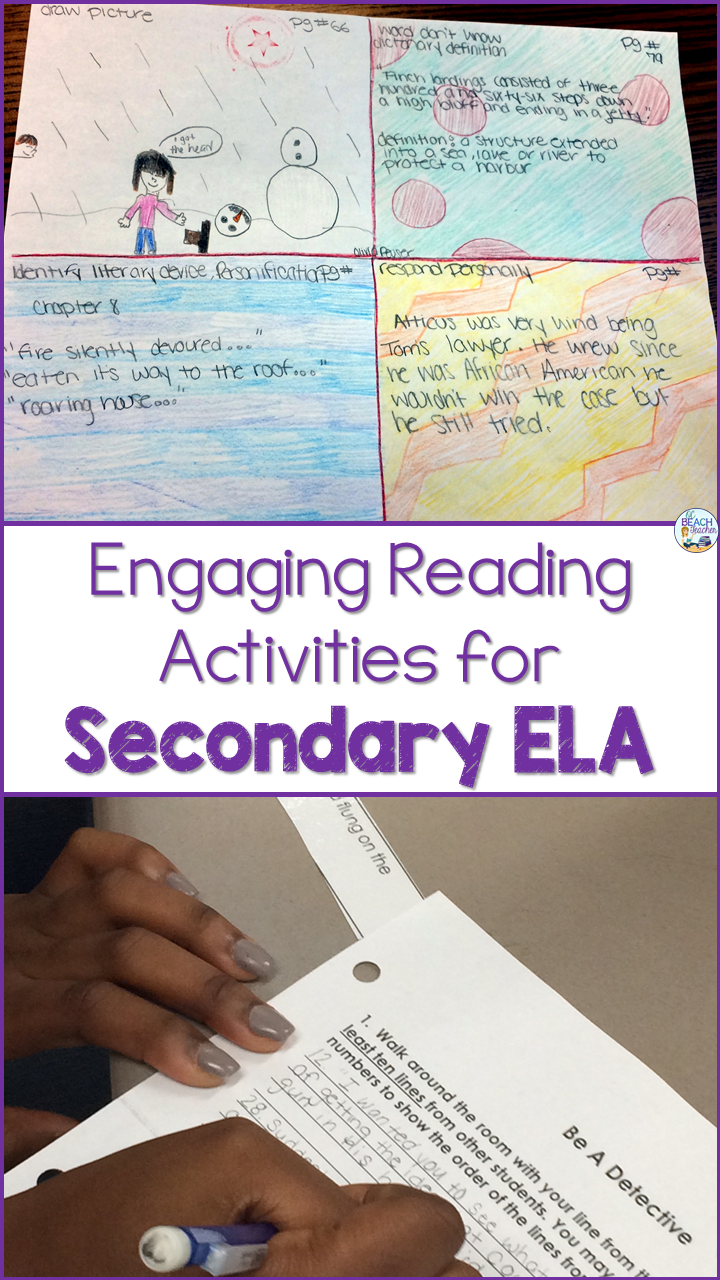
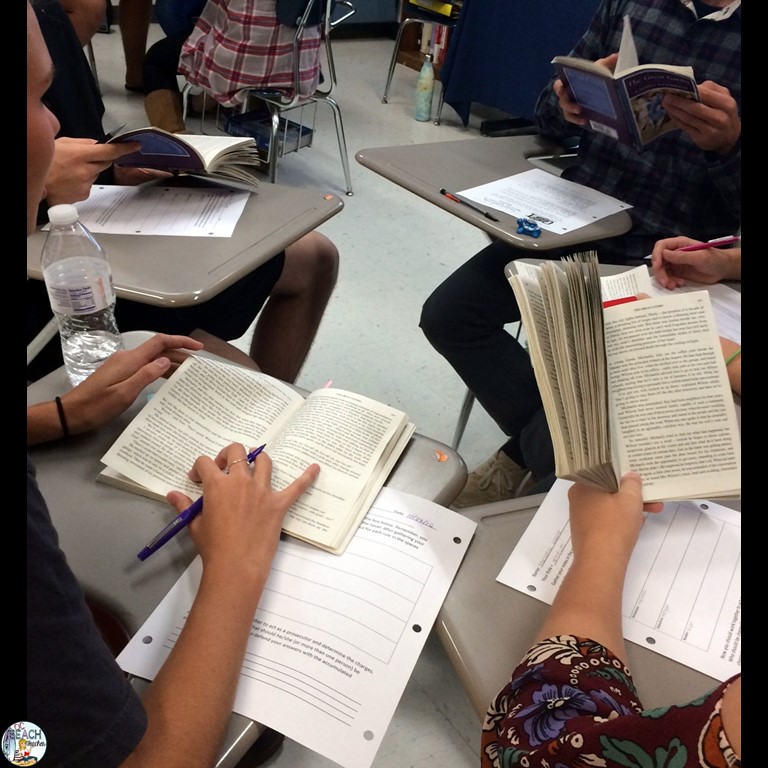


5 Comments
Good for you for persevering with SSR in light of the challenges you face from administrators! I love your idea for the anticipation activity, and the "boxing" is so cute. These are wonderful strategies, and I had not heard of all of them. Thanks for sharing!
You crack me up – medieval times. The numbered heads idea is fabulous. I think I could use that numerous ways.
I taught at a school that had SSR at the start of every class. That was my first experience, and I saw huge benefits. I modeled reading for the students, and they were always interested in what I was reading.
Thanks for the ideas. 🙂
I love your Gatsby idea! I definitely want to use it! Great ideas. Thank you!
Love the boxing idea! I'm also a big fan of the written conversations–they get everyone involved and thinking. Thanks for sharing!!
Impressive idea this is the best way to engage students with studies activity UK Assignments Help Writing Service